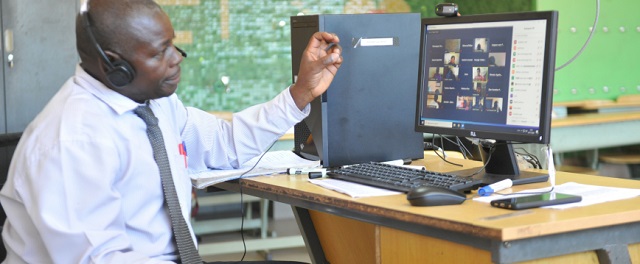
Insights from Uwezo Surveys in Uganda
Kampala, Uganda | MARY GORETTI NAKABUGO | Covid-19 has forced an unprecedented level of school closures, affecting more than 1.7 billion learners around the world. Now, a question of growing concern is how governments should be planning for the re-opening of schools. Education systems will have to deal with a multifaceted set of issues, from new health concerns and sanitation requirements, to remediation and making up for delays in essential learning. While schools are closed, many systems are introducing new resources for home-based learning, some of which may hold promise even after schools have been re-opened.
Uwezo’s assessments of children’s learning and surveys of primary schools in Uganda, which include an assessment of school water supply, sanitation and hygiene, provide a unique source of insight on some of the critical issues that education systems may need to consider in planning for the re-opening of schools. Here we discuss findings from the surveys, as well as the Ugandan Government’s ‘continuity of learning’ efforts.
Implications of learning outcomes
The recent Uwezo assessment shows that, prior to the Covid-19 crisis, learning was already declining in Uganda. Between 2015 and 2018 the proportion of primary Grade 3 to Grade 7 children who could read and comprehend a basic Grade 2 level story in English declined from 39 percent to 33 percent. In mathematics, the proportion of this same group of children who could do primary Grade 2 division declined from 52 percent to 45 percent.
These declines reflect low absolute levels of learning as well. Examining children by age, among 10-year-olds less than a quarter could complete the Grade 2 level division problem, and only 15 percent could read a simple story with comprehension. By the age of 14, still only 55 percent have achieved basic numeracy, only 40 percent can read with comprehension in English, and 34 percent can read with comprehension in a local language.
The Covid-19 school closures will exacerbate an already-existing trend of low and declining learning outcomes. These results have important implications for education systems when schools reopen which relate to, but also transcend, the current crisis.
The first implication is that the curriculum and instruction will need to be adapted to the learning levels of the children upon return. While the government is undertaking efforts to maintain continuity of learning while children are out of school, doing so successfully will be a difficult task. But, even if these efforts are successful, children would still be far behind the expected learning level for their age or grade. Even best-case continuity of learning at the low learning levels achieved in school would leave many children far behind their grade level and unable to participate fully in school when they return. A 14-year-old who cannot read cannot engage with a secondary school curriculum.
Secondly, this presents an opportunity for education systems to reorient instruction to prioritise all children achieving foundational literacy and numeracy. As children’s return to school forces education systems to adapt instruction and undertake remediation on a scale never before experienced, they should use those efforts to ensure that all children gain foundational skills that enable later learning.
 The Independent Uganda: You get the Truth we Pay the Price
The Independent Uganda: You get the Truth we Pay the Price



